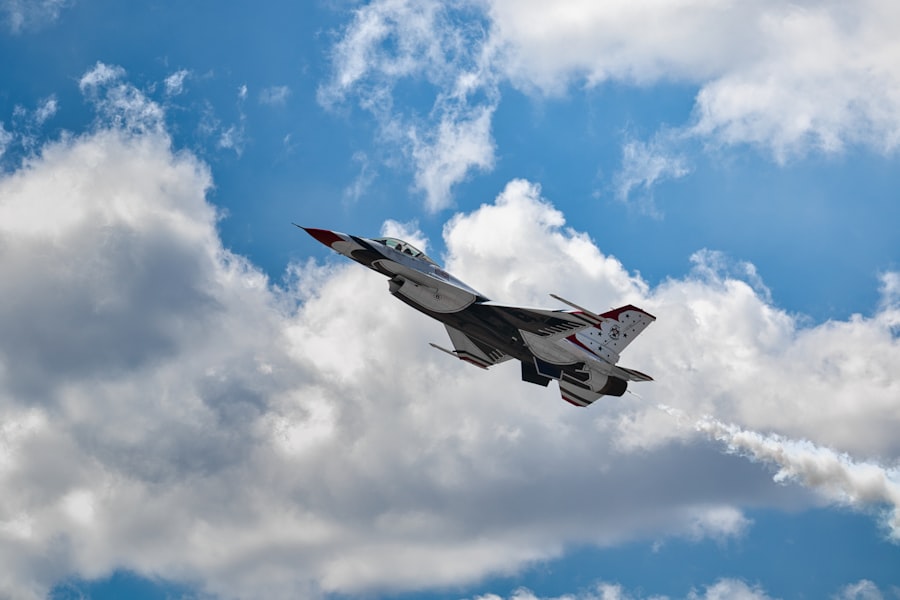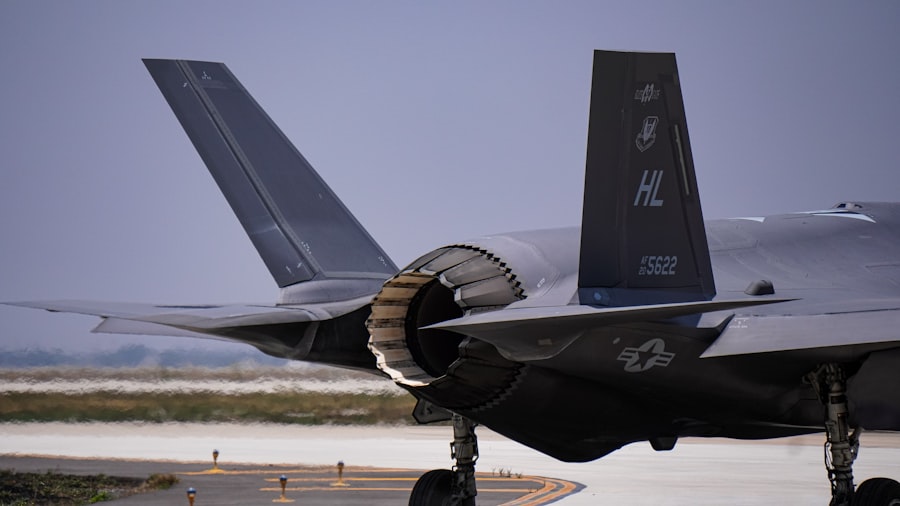The aerospace and defense industry is a critical sector that encompasses the design, development, and production of aircraft, spacecraft, and defense systems. This industry plays a pivotal role in national security, economic stability, and technological advancement. It includes a wide range of activities, from commercial aviation and space exploration to military equipment manufacturing and cybersecurity solutions.
The industry’s significance is underscored by its contributions to job creation, innovation, and global trade, making it a cornerstone of modern economies. Historically, the aerospace and defense sector has been characterized by its high barriers to entry, substantial capital requirements, and rigorous regulatory frameworks. Major players in this field include established corporations such as Boeing, Lockheed Martin, and Airbus, which dominate the market with their extensive portfolios of products and services.
However, the landscape is evolving, with new entrants and startups leveraging advancements in technology to disrupt traditional business models. As nations increasingly prioritize defense spending amid geopolitical tensions, the aerospace and defense industry is poised for significant transformation.
Key Takeaways
- The Aerospace & Defense Industry is a critical sector that encompasses the design, development, and production of aircraft, spacecraft, and defense systems.
- Current trends in the Aerospace & Defense Industry include increasing demand for unmanned aerial vehicles (UAVs), cybersecurity concerns, and a focus on sustainability and environmental impact.
- Key opportunities for growth in the Aerospace & Defense Industry include the development of advanced technologies, expansion into emerging markets, and increased investment in space exploration.
- Regulatory and policy considerations in the Aerospace & Defense Industry include compliance with international trade regulations, export controls, and government procurement policies.
- Technological advancements and innovations in the Aerospace & Defense Industry are driving developments in areas such as artificial intelligence, additive manufacturing, and advanced materials.
Current Trends and Challenges in the Aerospace & Defense Industry
The aerospace and defense industry is currently navigating a complex landscape marked by several key trends. One prominent trend is the increasing emphasis on sustainability and environmental responsibility. As climate change becomes an urgent global issue, companies are investing in greener technologies, such as electric propulsion systems for aircraft and sustainable aviation fuels.
This shift not only addresses regulatory pressures but also aligns with consumer demand for more environmentally friendly travel options. For instance, major airlines are exploring partnerships with startups focused on developing hybrid-electric aircraft to reduce their carbon footprints. Another significant trend is the growing integration of digital technologies into aerospace and defense operations.
The adoption of artificial intelligence (AI), big data analytics, and the Internet of Things (IoT) is transforming how companies design, manufacture, and maintain their products. These technologies enable predictive maintenance, enhance supply chain efficiency, and improve overall operational effectiveness. However, this digital transformation also presents challenges related to cybersecurity.
As systems become more interconnected, the risk of cyberattacks increases, necessitating robust security measures to protect sensitive data and critical infrastructure.
Key Opportunities for Growth in the Aerospace & Defense Industry

Amidst the challenges facing the aerospace and defense industry, there are numerous opportunities for growth that stakeholders can capitalize on. One such opportunity lies in the burgeoning space economy. With advancements in satellite technology and a growing interest in space exploration, private companies are increasingly entering the market.
Initiatives like SpaceX’s Starlink project aim to provide global internet coverage through satellite constellations, while NASA’s Artemis program seeks to return humans to the Moon by 2024. These developments create a demand for innovative solutions in satellite manufacturing, launch services, and space tourism. Additionally, the defense sector is witnessing a shift towards modernization and modernization of military capabilities.
Governments are investing in next-generation technologies such as unmanned aerial vehicles (UAVs), advanced missile systems, and cyber warfare capabilities. The increasing complexity of modern warfare necessitates sophisticated systems that can operate in contested environments. Companies that can provide cutting-edge solutions in these areas stand to benefit significantly from government contracts and partnerships.
For example, the U.S. Department of Defense has prioritized investments in AI-driven systems for intelligence analysis and autonomous systems for reconnaissance missions.
Regulatory and Policy Considerations in the Aerospace & Defense Industry
| Regulatory and Policy Considerations | Impact |
|---|---|
| Export Controls | Affects international trade and technology transfer |
| Government Contracts | Regulates procurement and bidding processes |
| Environmental Regulations | Impacts manufacturing and operations |
| Intellectual Property Rights | Protects innovation and proprietary technology |
| Security and Cybersecurity | Ensures protection of sensitive information and assets |
The aerospace and defense industry operates within a highly regulated environment that influences its operations and strategic decisions. Regulatory bodies such as the Federal Aviation Administration (FAA) in the United States and the European Union Aviation Safety Agency (EASA) establish stringent safety standards for aircraft design and operation. Compliance with these regulations is essential for manufacturers seeking to enter or maintain their position in the market.
The certification process can be lengthy and costly, often requiring extensive testing and documentation to ensure that products meet safety requirements. In addition to safety regulations, geopolitical considerations play a significant role in shaping policy decisions within the aerospace and defense sector. Export controls on military technologies are enforced by governments to prevent sensitive technologies from falling into the wrong hands.
The International Traffic in Arms Regulations (ITAR) in the U.S., for instance, restricts the export of defense-related articles and services to foreign entities without government approval. Companies must navigate these complex regulatory frameworks while also adapting to changing political landscapes that can impact defense budgets and procurement strategies.
Technological Advancements and Innovations in the Aerospace & Defense Industry
Technological advancements are at the forefront of driving innovation within the aerospace and defense industry. One of the most transformative developments has been the rise of additive manufacturing, commonly known as 3D printing. This technology allows for rapid prototyping and production of complex components with reduced material waste.
Aerospace manufacturers are increasingly utilizing 3D printing to create lightweight parts that enhance fuel efficiency while maintaining structural integrity. For example, GE Aviation has successfully produced fuel nozzles for jet engines using additive manufacturing techniques, resulting in significant cost savings and improved performance. Moreover, advancements in autonomous systems are reshaping military operations.
Unmanned aerial vehicles (UAVs) have become integral to modern warfare, providing surveillance capabilities without risking human lives. The development of autonomous drones equipped with AI algorithms enables real-time decision-making during missions. Companies like Northrop Grumman are leading the charge in developing advanced UAVs capable of conducting reconnaissance missions in contested environments.
These innovations not only enhance operational effectiveness but also reduce costs associated with manned missions.
Global Market Dynamics and Competition in the Aerospace & Defense Industry

The global aerospace and defense market is characterized by intense competition among established players and emerging entrants alike. Major corporations dominate the landscape; however, smaller companies are increasingly carving out niches by focusing on specialized technologies or services. The competitive dynamics are influenced by factors such as government contracts, technological capabilities, and international partnerships.
For instance, collaborations between countries on joint defense projects can lead to shared resources and expertise while fostering innovation. Geopolitical tensions also play a crucial role in shaping market dynamics within the aerospace and defense sector. Nations are investing heavily in their military capabilities amid rising threats from adversaries.
This arms race creates opportunities for defense contractors to secure lucrative contracts for advanced weaponry and systems. Additionally, countries are increasingly looking to diversify their supply chains to reduce dependence on foreign manufacturers, leading to a rise in domestic production capabilities. This trend presents both challenges and opportunities for companies operating within specific regions.
Investing in the Aerospace & Defense Industry: Risks and Rewards
Investing in the aerospace and defense industry can yield substantial rewards; however, it is not without its risks. One of the primary risks is the cyclical nature of defense spending, which can be influenced by changes in government policies or economic conditions. During periods of budget cuts or economic downturns, defense contractors may face reduced demand for their products and services.
Investors must carefully assess government budgets and geopolitical developments to gauge potential impacts on revenue streams. On the other hand, successful investments in this sector can lead to significant returns due to long-term contracts with governments and multinational corporations. The industry’s reliance on advanced technologies means that companies capable of innovating will likely thrive even amidst economic fluctuations.
For instance, firms specializing in cybersecurity solutions are experiencing heightened demand as nations prioritize protecting critical infrastructure from cyber threats. Investors who identify emerging trends within this sector can position themselves advantageously for future growth.
Future Outlook for the Aerospace & Defense Industry
The future outlook for the aerospace and defense industry appears promising as it adapts to evolving technological landscapes and geopolitical realities. The increasing focus on sustainability will likely drive innovation toward greener technologies across both commercial aviation and military applications. As governments commit to reducing carbon emissions, companies that invest in research and development of sustainable aviation fuels or electric propulsion systems may gain a competitive edge.
Furthermore, advancements in artificial intelligence and machine learning will continue to reshape operational paradigms within the industry. The integration of these technologies into various aspects of aerospace design, manufacturing processes, and military operations will enhance efficiency while reducing costs. As nations grapple with emerging threats such as cyber warfare or unmanned combat systems, investments in advanced technologies will be paramount.
In conclusion, while challenges persist within the aerospace and defense industry—ranging from regulatory hurdles to geopolitical tensions—the opportunities for growth remain robust. Stakeholders who navigate this complex landscape with foresight can position themselves strategically for success as they contribute to shaping the future of air travel, space exploration, and national security.


